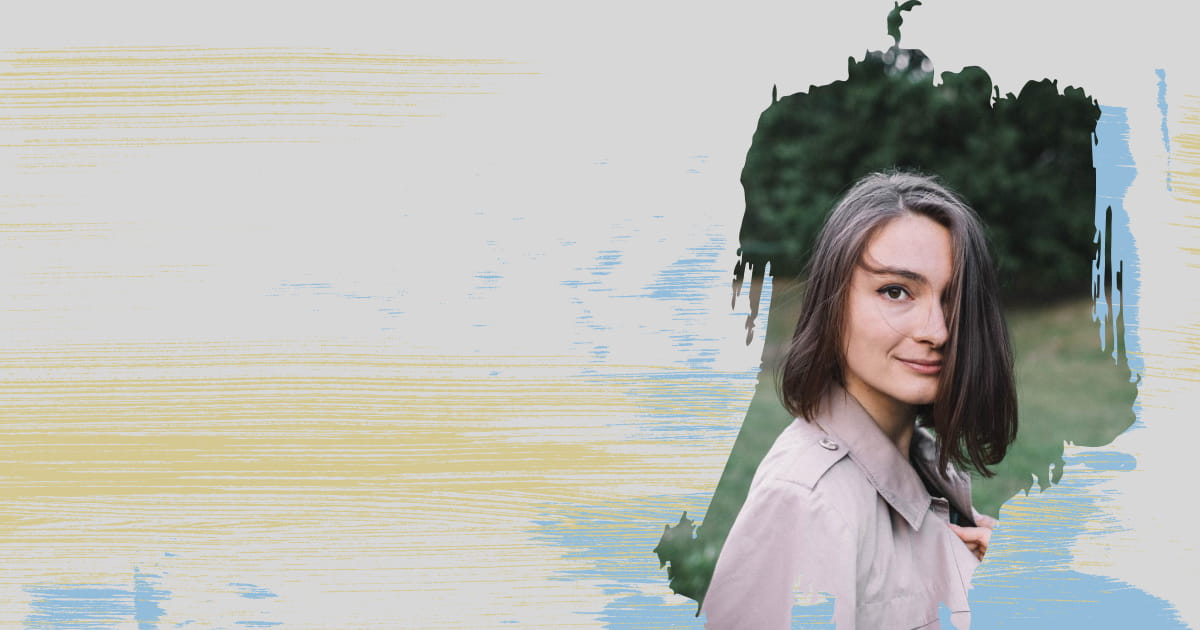Artists Against War: The Visual Language of War. An Interview with Olga Smirnova

Svidomi in collaboration with Artists Against War, an online gallery of posters created to support Ukraine after the Russian full-scale invasion, tell the stories of the artists who help Ukraine by means of art. Read an interview with the illustrator Olga Smirnova.
— What did you do before February 24?
— I specialized in illustrating children's books. Before the full-scale invasion, I worked with various publishing houses, but after it happened our work had to be put on hold. Now, I have already resumed my work with the Shkola publishing house, I am almost done with illustrating a book for them. I also used to make collages: first just for myself, and later I incorporated them in my illustration work.
— Did you think that a full-scale invasion could begin?
— I was one of those people who ignored the news about the possible beginning of a full-scale attack. I wanted to live with my pink glasses on, and I did not understand what was really happening. Until the last moment, I did not believe that there would be a full-scale war, and I did not pack my go-bag. Moreover, I go jazz dancing, and we were actively getting ready for the show that was supposed to take place on February 25.
— How did February 24 start for you?
— I was at home, in Kyiv, when I woke up around 5 o’clock in the morning and heard the explosions. I woke up my boyfriend, and I called my parents and friends. We had no plan: we spent the whole day packing things, buying food. On the next day, we went to the suburbs to my boyfriend's parents' house.
Before the full-scale war, I did not know our history very well and what the relationships were between Russians and Ukrainians. When I started researching and learning how deep and serious everything is, I realized that I wanted to stay in Ukraine. I started feeling a strong connection with my native land, and I finally began to truly identify myself as Ukrainian. Unfortunately, I haven’t realized this until recently. Yet in September, I went to Spain to study dancing.
— What did creativity mean to you at the beginning of the full-scale war?
— On that same evening when we arrived at my boyfriend’s parents' place in the village, I made my first collage. The process of creating a collage was a release of emotions for me: I tear off pieces of paper, glue them, and I feel more at ease. There always is a need to be creative, and collage was the best way for me to realize this need.
After a few days, I started looking for ways to help. There were a lot of chats in Telegram: there was a need to make designs, illustrations, and posters for various initiatives. Then I found Against War Gallery and made posters for them.
In March, a friend of mine asked me to hold collage workshops with her children via Zoom. Her family left for the West of Ukraine, and her children had to do something. I was excited about it, and after some time I decided to give free live broadcasts on Instagram for everyone on how to make collages. For instance, we created beasts reminding those in the pictures of Maria Prymachenko. The participants wrote that it helped to distract themselves from the news — collage making has a therapeutic effect. Then, thanks to the Volunteer Home organization, this activity has grown into offline collage meetings for adults, as well as workshops for displaced children in Kyiv and in the de-occupied territories of the Kyiv region.
— You specialize in illustrations for children. When you were drawing about the war, did you include some kind of messages specifically for children?
— It is hard for me to distance myself from illustrations for children, my brain usually works in that direction. Even if my works are not children’s works, they are for children as well.
I work with the Piznaiko magazine. Somewhen in March, they decided to continue publishing the magazine in an online version. Then I drew a spread for them about what children can do in a bomb shelter. At that time, it was one of my most valuable works.
— How does the ninth month of the full-scale war affect your creativity?
— For the last few months, I have been focusing more on myself. I think that many of us have now come to realize that it is time to make plans and dreams come true, the ones that were postponed “for later”. When you live in Ukraine, you realize that every single day anything can happen, so you want to live your life to the fullest and make your plans work. One of the ideas that I have been putting off was to draw my own book. Now I am working on it, a book for children about the war.
Now, when I do something for myself, I do not often reflect on the topic of war, I rather use my creativity to tell something about Ukrainian culture. I want to learn more, to explore folk art, to read about avant-garde artists — I feel a strong connection with all this, the one I did not feel or ignored before.
— How do you define the role of art in a war?
— The war is also being fought on the cultural front, because culture is what people consume every day through movies, music, and works of art. The fact that we were attacked physically is the result of our losing on the cultural front. That is why it is now necessary to create and spread the messages that will tell the truth and will be louder than Russian propaganda. Culture and art also are the small steps towards our peaceful future.


